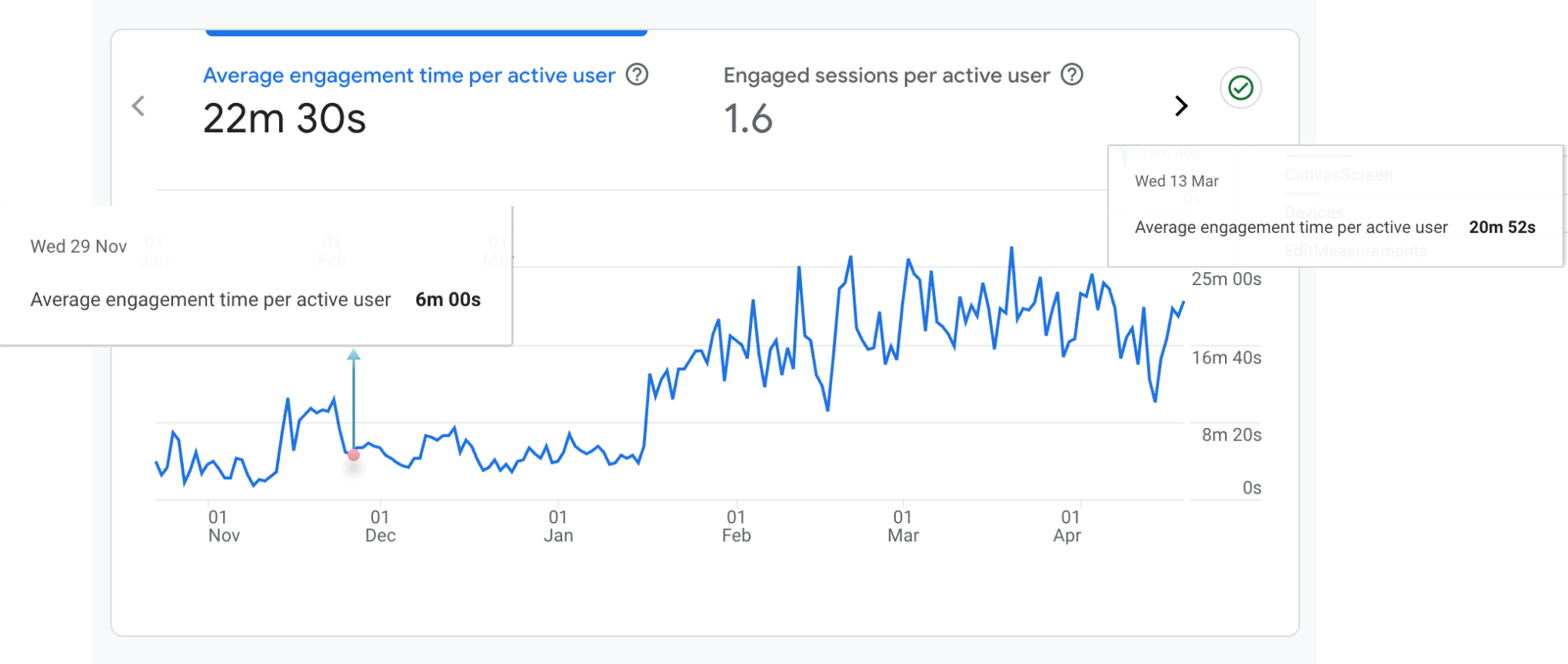

Custom templates used daily

Increase in use engagement time

Measurement Taken Monthly

Following the successful launch of the ROCK Job Site App ( See ROCK APP Initial Release ↗ ), the ROCK App now plays a larger role in driving revenue and fostering partnerships with enterprise users.This means we must prioritize enterprise feature requests and assess the most cost-effective features to implement.

The ROCK App serves a diverse range of construction professionals, each with unique workflow needs. With an overwhelming number of feature requests, my first step was to categorize and identify recurring themes. A clear pattern emerged
ROCK users urgently need an efficient way to process the vast amount of data within the app, without having to rely on external tools
Now we decide to focus on “Process Data”, three primary characteristic of enterprise workflows informed my design decisions

Apparently, creating individual features for every use case would be too narrow and unscalable. Instead, I took a modular approach, aiming to design a flexible framework that could adapt to different workflows.


This led to the concept of a Custom Template, allowing users to:



Our initial instinct was that giving users full flexibility would burden them with complexity. So in my first approach, I prioritized simplicity: a step-by-step process to guide them effortlessly; A clean, minimal interface to keep things intuitive and a design favoring ease of use over complete control.
Immediately after working prototype is ready, we sent to several core partners to play test. To our surprise, both adoption data and user feedback indicated negative results, with a high drop-off rate within the first few minutes.


As we investigated further, we discovered that many users find the visuals not informative and immediately resisted the linear, sequential workflow. Even after understanding the process, they quickly reverted to their familiar CSV-style workflow, which they perceived as faster and more descriptive.

Now, let's take a step back and reassess what truly matters to these professionals — control. They need:
➊ A clear and straightforward approach
➋ Higher information density for better insights
➌ Greater flexibility and customization options
➍ Enhanced efficiency to streamline their workflow



Adoption for this version has improved significantly, with several partners even requesting an earlier release to streamline their workflows and support their transformation.
But we didn’t stop there. While the professional construction industry may have a higher tolerance for usability challenges, we believe it’s our responsibility to push the boundaries—refining the interface and making the design more intuitive and easier to use.
But we didn’t stop there. We keep refining the experience by emphasizing clarity, efficiency, and usability while maintaining enterprise workflow optimization.



For more story behind Custom Template, I'd be happy to share more insights and walk you through the journey—just let me know!